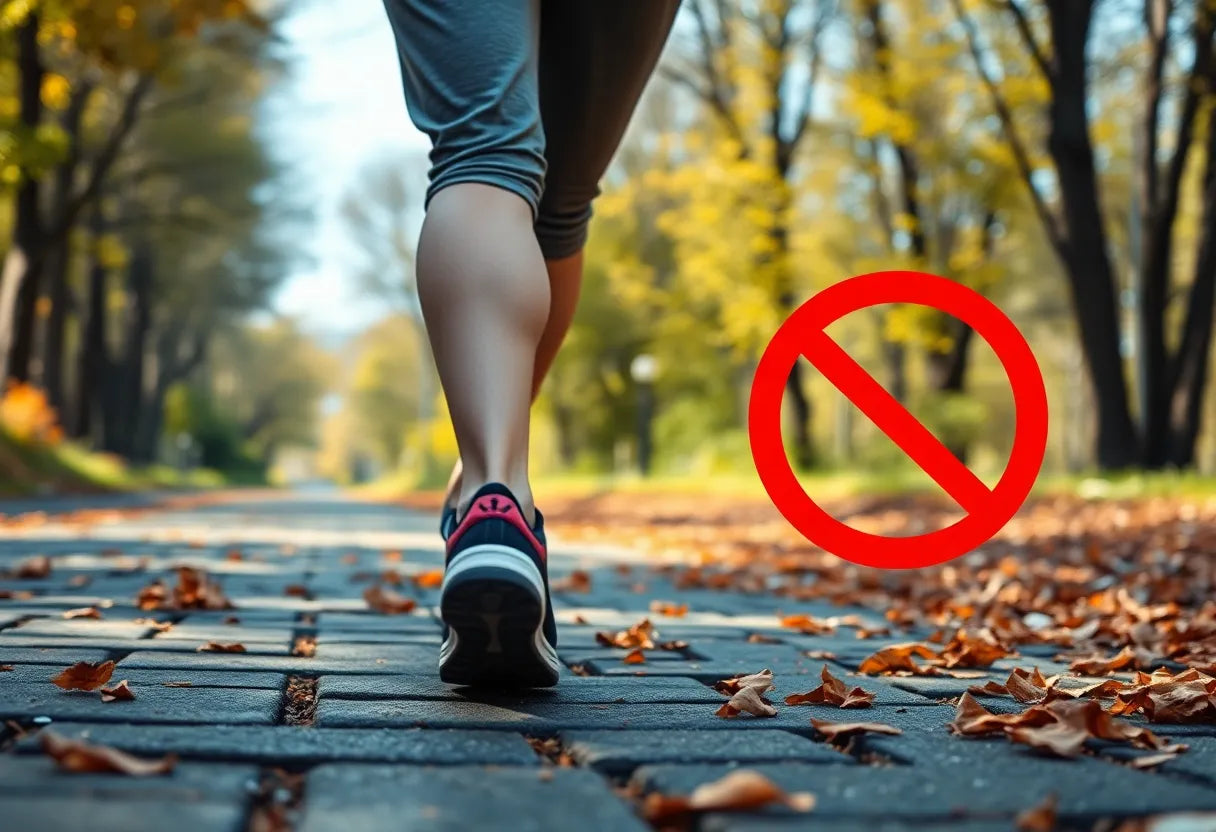Living with sciatica can be a daily challenge, as the condition often manifests as pain that radiates from the lower back down through the leg. This discomfort can significantly impact one's ability to perform everyday activities, diminishing overall quality of life. Sciatica occurs when the sciatic nerve is irritated, often due to a herniated disc or spinal stenosis. As a result, individuals may experience symptoms ranging from mild tingling to severe, debilitating pain.

Lumbar support belt
Provides support and relief for lower back pain, ideal for sciatica and herniated discs.
For those seeking non-invasive relief from sciatica, the McKenzie Method offers a promising solution. This exercise-based approach is designed to help manage and alleviate sciatica symptoms through targeted movements. By focusing on specific exercises, the McKenzie Method aims to reduce pain and improve spinal function, providing a pathway to relief without the need for surgery or medication.
the McKenzie method: a proven approach to sciatica relief
Developed by physiotherapist Robin McKenzie in the 1950s, the McKenzie Method, also known as Mechanical Diagnosis and Therapy (MDT), has gained recognition for its effectiveness in treating back pain and sciatica. This method emphasizes self-treatment, empowering individuals to take control of their pain management through a series of exercises tailored to their specific needs.
One of the key concepts of the McKenzie Method is pain centralization. This occurs when exercises cause the pain to move from the leg toward the spine, indicating a positive response and progress in treatment. The centralization of pain is a crucial goal, as it suggests that the exercises are helping to address the underlying issue rather than just masking symptoms.
The McKenzie Method's structured approach involves a sequence of exercises designed to promote spinal alignment and reduce nerve compression. By following this regimen, many individuals find significant relief from sciatica symptoms, enhancing their ability to engage in daily activities with less discomfort.
Incorporating the McKenzie Method into your routine can be a game-changer for managing sciatica. With its focus on self-care and evidence-based exercises, this approach provides a practical and effective way to address pain and improve overall spinal health. Whether you're dealing with acute or chronic sciatica, the McKenzie Method offers a path to relief that is both accessible and sustainable.
in-depth guide to McKenzie sciatica exercises
As you delve deeper into the McKenzie Method, understanding the specific exercises and their execution is crucial for maximizing their benefits. These exercises are designed to target the underlying causes of sciatica by promoting proper spinal alignment and reducing nerve compression. Below is a detailed guide on how to perform each exercise, along with their intended purposes.
1. lying face-down (prone)
Begin your routine with the lying face-down position. This simple exercise involves lying flat on your stomach on a firm surface. The key is to allow your body to relax completely, focusing on deep, steady breathing. This position helps decrease pressure on the spinal nerves and starts the process of pain centralization, where discomfort begins to move from the legs back towards the spine, a positive indication of progress.
2. lying face-down in extension
Transitioning from the prone position, gently prop yourself up onto your elbows. This posture further encourages centralization by extending the lumbar spine, which can alleviate nerve compression. Hold this position for 30 seconds to a minute, gradually increasing the duration as comfort allows. This exercise is vital for those who can tolerate mild extension without increased pain.
3. extension in lying (prone press-ups)
The prone press-up is another extension exercise that builds upon the previous positions. While lying face-down, place your hands under your shoulders and gently press your upper body upwards, keeping your hips on the floor. Perform 10 repetitions, holding each press-up for 2-3 seconds. This movement helps to realign spinal discs and relieve pressure on the sciatic nerve, promoting a return to normal function.
4. extension in standing
Standing extensions are an excellent way to incorporate lumbar extension into everyday activities. Stand with your feet shoulder-width apart and place your hands on your lower back for support. Lean back gently and hold the position for 2-3 seconds, repeating 10 times. This exercise is particularly useful for individuals who spend long periods sitting, as it counteracts the forward-bending postures that often exacerbate sciatica symptoms.
customizing your McKenzie exercise routine
While the exercises described above form the core of the McKenzie Method, it's essential to tailor your routine to your specific needs and symptoms. Begin with the extension-based exercises, as they are typically the most beneficial for centralizing pain. As you progress, consider incorporating flexion exercises to enhance flexibility and further reduce nerve tension.
Frequency and progression are key components of a successful exercise regimen. Start with a few repetitions of each exercise daily, gradually increasing as your comfort and ability improve. Pay close attention to your body's responses, and avoid pushing through pain. If symptoms worsen or new pain develops, it's crucial to stop the exercises and consult a healthcare professional for guidance.
Professional assessment is invaluable in customizing your McKenzie exercises. A trained physiotherapist can evaluate your condition, recommend specific exercises, and ensure you perform them correctly to prevent injury and maximize benefits. This personalized approach not only enhances safety but also increases the effectiveness of your sciatica management plan.
By integrating these exercises into your daily routine, you can take active steps towards alleviating sciatica pain and improving your quality of life. The McKenzie Method's emphasis on self-treatment empowers you to manage your symptoms effectively, offering a non-invasive path to relief and recovery.

Men's Posture Shirt™ - Black
Patented shirt that activates muscles, improves posture, and offers pain relief.
additional McKenzie exercises for sciatica relief
Expanding your exercise routine with additional McKenzie exercises can further enhance your journey toward alleviating sciatica pain. These exercises are designed to complement the extension-based movements by incorporating flexion, which can help stretch the lower back and reduce nerve tension.
5. flexion in lying (knees-to-chest)
To perform this exercise, lie on your back and gently bring your knees toward your chest. Hold this position for 30 seconds, then release. Repeat 5-10 times. This movement helps to stretch the lower back and can provide relief by reducing tension on the sciatic nerve.
6. flexion in sitting
While sitting on a chair, bend forward to touch your toes, holding the stretch for 10-15 seconds before returning to an upright position. Repeat this exercise 5 times. This gentle flexion can help relieve pressure on the spine and promote flexibility.
7. flexion in standing
Stand with your feet together and bend forward at the waist, allowing your arms to hang freely. Hold this position for 10-15 seconds and repeat 5 times. This exercise encourages flexibility and helps reduce tension in the lower back.
research and efficacy of the McKenzie method
The McKenzie Method has been the subject of numerous clinical trials and systematic reviews. Research indicates that it can be as effective, if not more so, than other therapies for reducing pain and disability in individuals with sciatica. Some studies suggest that it may also decrease the likelihood of needing surgery in the long term. However, results can vary, and some trials show no significant difference in outcomes compared to other treatments. The key advantage of the McKenzie Method is its focus on self-treatment and pain centralization, which empowers individuals to manage their symptoms effectively.
safety precautions and professional guidance
While the McKenzie exercises are generally safe, it's crucial to listen to your body and avoid pushing through pain. If you notice that your symptoms worsen or the pain spreads further down your leg, stop the exercises immediately and consult a healthcare professional. A physiotherapist trained in the McKenzie Method can provide valuable guidance, ensuring that your exercise routine is tailored to your specific needs and performed safely.
frequently asked questions
What is the McKenzie Method?
The McKenzie Method is a therapeutic approach focusing on exercises to reduce pain and improve spinal function by promoting pain centralization.
How often should I perform these exercises?
Frequency varies; start with a few repetitions daily, gradually increasing as comfort allows. Consult a professional for personalized advice.
Can I do these exercises if my pain is severe?
Begin with mild exercises like lying face-down and consult a professional before progressing to more advanced exercises.
What if my symptoms worsen during exercises?
Stop immediately and seek professional advice to adjust your routine safely.
How long until I see results?
Results vary; some may experience relief within days, while others may take weeks. Consistency and proper technique are key.
Källor
- Jankovic, D. (2017). "The McKenzie Method in Sciatica Treatment: A Review." BJBMS.
- Smith, L. et al. (2023). "Efficacy of the McKenzie Method for Sciatica Relief." PubMed.
- Spine-Health Editorial Team. (n.d.). "What is the McKenzie Method for Back Pain and Neck Pain?" Spine-Health.
- Brown, T. et al. (2023). "Clinical Trials on McKenzie Method for Sciatica: A Systematic Review." SAGE Journals.
- Wilson, J. (2019). "Sciatica and the McKenzie Method." NCBI Bookshelf.
- Martin, C. et al. (2018). "Effectiveness of McKenzie Exercises in Sciatica Management." JOSPT.
- McKenzie Institute. (n.d.). "Lumbar Trials and Research." McKenzie Institute.


















